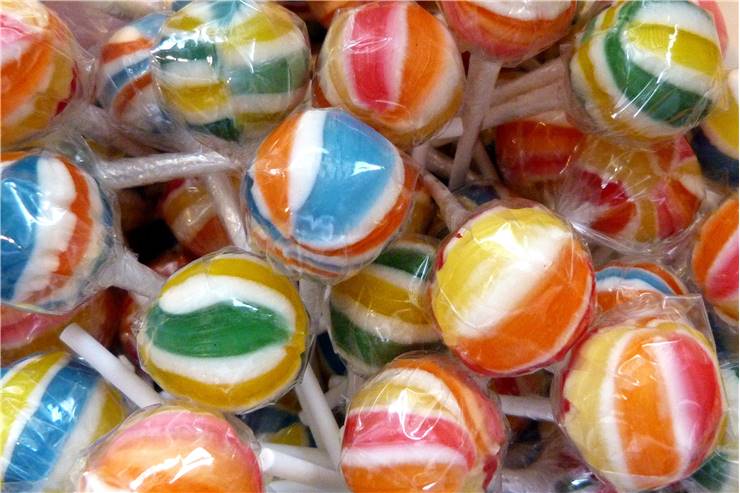History of Lollipops
Ever since the first commercial lollipops appeared on the modern market in the early years of 20th century, modern historians and candy makers tried to decipher the origins of this interesting and unique candy product. Lollipops are made from hard candy that is attached to the stick of some kind, and in order for it to be consumed it must be either licked or bitten. According to the findings of historians, this kind of candy configuration was used many times before modern times, and first instances of it go back significantly to the past.
This first appearance of the lollipop comes from few thousand years ago in the archeological findings that confirmed that our ancestors used honey as a preservative to other more easily spoiled food. For easier access to the meal, they stick a piece wood to the honey, or preserved fruit, nuts or other food and consumed it by licking and biting. As the time went, limited amounts of honey and very low production of sugar almost destroyed this tradition of our ancestors, but all of that changed in the 17th century when sugar became more plentiful. Street vendors all across London quickly found use for this long discussed candy, and started selling manually made "lolly pop" in large quantities (according to the linguists, lolly meant "tongue" and pop meant "slap", making a lollypop known as "tongueslap"). One major difference between this old English "lolly pop" and modern versions is that old recipe demanded the candy to be soft, rather than hard candy.

Various forms of lollipops continued to be popular in in following centuries, and many reports told of its usage in several territories, including mid-nineteenth century England and during American Civil War. As the 19th century came to it end, many candy makers around the world saw the potential of lollypops and started devising a plan to monetize it. One of the most famous people who've done so was American candy maker George Smith who created first modern variant of lollypop in 1908. According to his confessions, he named this candy by his favorite race horse which carried a name Lolly Pop. Even though he was the first to come up with the name, George Smith managed to secure patent on his candy and name in 1931. During the years after his invention, many companies found a way to improve lollypop production by inventing automated machines which had the ability to create between 40 to 2400 sticks per hour. Some of the most famous companies that sold lollipopsin the early years if 20th century were "McAviney Candy Company" and "Racine Confectionary Machine".
In modern times, multinational global companies have capability to create a truly staggering amount of lollipops every day, shaped into hundreds varieties, and made from countless recipes. One of the most notable producers of lollipops today is Spangler Candy Company (creators of famous Dum Dums and Saf-T-Pops varieties) can produce three million units per day, which is not enough to satisfy consumption of lollipops in United States.
Modern production of lollipops introduced many innovations in their shape, recipes and production, and judging by the relentless rise in their popularity, lollipops will continue to be a part of our culture and diet forever.


